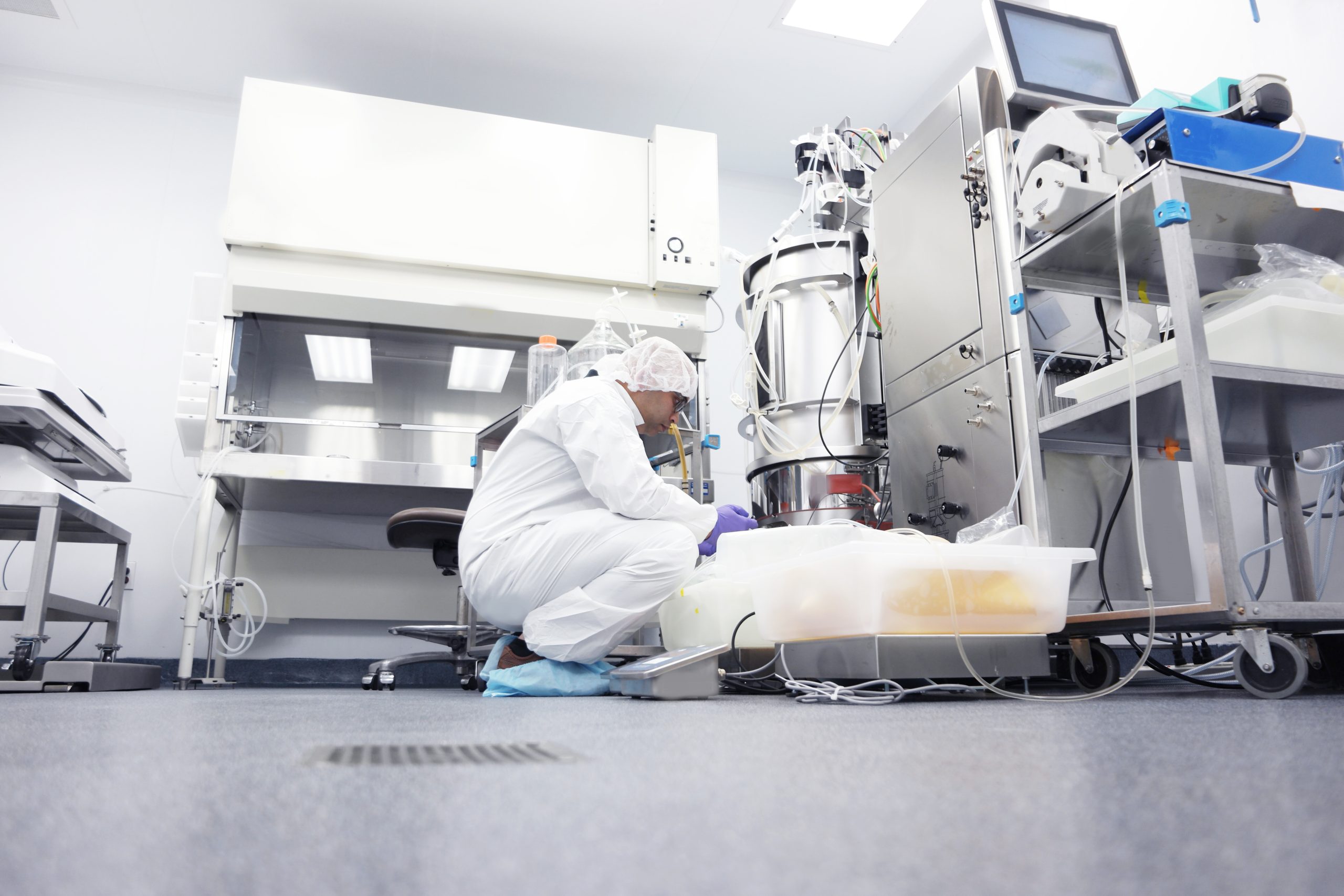Fibrin hydrogel, an oft-used two-dimensional scaffold for in vitro cell culture, was recently functionalized to grow human induced pluripotent stem cells (hiPSCs) in three dimensions. This advance makes it easier and more efficient for biotherapeutic manufacturers to engineer tissues, including organoids, that better mimic human tissue and to develop hiPSCs to use in regenerative therapies and research.
Called Chimera-511, this new chimeric protein combines the benefits of fibrin gels—autologous preparation, low risk of immune rejection, and degradation by fibrinolytic enzymes—with the high integrin-binding activity of laminin, which helps undifferentiated hiPSCs expand efficiently.
Consequently, Chimera-511 “bridges the gap between in vivo microenvironments and conventional two-dimensional in vitro culture,” enabling formation of complex tissue structures and functions, according to a recent paper by researchers from the Institute for Protein Research at the University of Osaka, led by senior researcher, professor Kiyotoshi Sekiguchi, PhD.

“Chimera-511 could serve as a promising substitute for the current gold standard for 3D stem-cell culture,” he tells GEN.
“Our fibrin gel represents the first 3D scaffold that faithfully recapitulates the physiological interactions of pluripotent stem cells with the surrounding extracellular matrix,” Sekiguchi says. “Importantly, it can be readily translated into clinical applications since our Chimera-511 can be produced using cGMP-banked CHO cells, and fibrin gels have long been used as surgical glues and wound dressings.”
To create Chimera-511, the scientists “directly connected the N-terminal self-polymerization domain of fibrinogen to the C-terminal integrin-binding domain of LM-511 through their heterotrimeric coiled-coil domains,” Sekiguchi and colleagues explain. It was also important to anchor “the Chimera-511 to the fibrin fibrils through the knob and hole interactions.” Mutations lacking those knob-hole interactions showed only minimal hiPSC proliferation.
25-fold amplification
“When we designed the chimeric protein between fibrinogen and laminin, we were uncertain whether such a heterotrimeric chimeric protein could be efficiently expressed and secreted in sufficient amounts to modify the biological function of fibrin gels, Sekiguchi says. But, because this chimeric protein incorporates itself into the fibrin gel, it “confers potent integrin-binding activity,” to support stem cell expansion.
Specifically, hiPSCs seeded into Chimera-511 exhibited more than 25-fold amplification and plateaued when Chimera-511 concentrations reached 50 nM. Cells seeded into the gel containing LM-511, however, showed no proliferation.
Importantly for biomanufacturers, this proliferation method allows serial passaging under 3D conditions and, therefore, scale up. After five 3D-to-3D serial passages, cell numbers increased from a baseline of 106 to a high of 1014. The cells maintained their ability to differentiate after each passage, but did not begin differentiating.
“To the best of our knowledge,” the team reports, “the fibrin gel functionalized with Chimera-511 is the first 3D cell culture scaffold to exhibit the full integrin-binding activity of laminin other than mouse tumor-derived basement membrane (BM) extract.” Consequently, it enables high levels of hiPSC proliferation without the batch-to-batch variability, composition, and xenographic concerns that accompany mouse tumor-derived extracts, the current gold standard.
